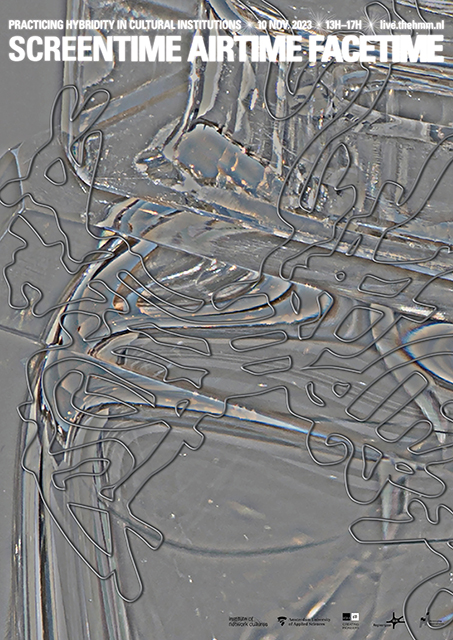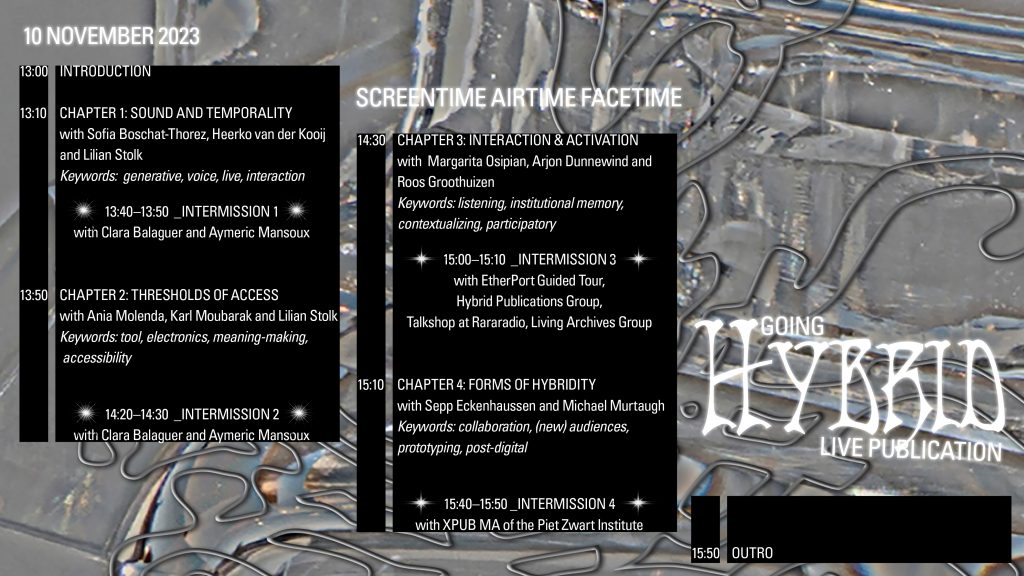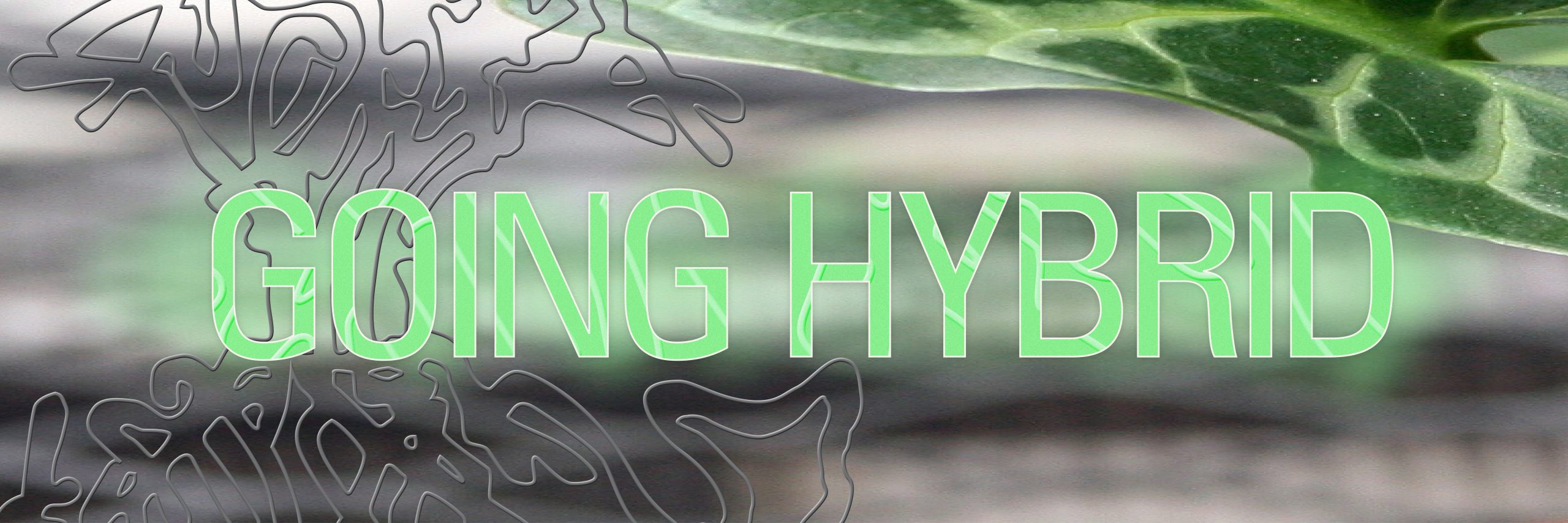We are happy to announce the launch of the final publication, celebrating the end of the two-year cycle through questioning hybrid experiments and strategies in the cultural sector. Screentime Airtime Facetime is in itself a hybrid experiment: a live-publication, where event is book, book turns from event, a live that will then be transcribed. On the 10th of November, between 13h—17h, we welcome you to the livestream, hosted at live.thehmm.nl

Poster design by Frederique Gagnon
For two years, the research project Going Hybrid has dedicated itself to the future of hybridity in the cultural field. We started by asking ourselves: Where will hybrid events take us? Which platforms are best practices for hosting a cultural event without Zoom fatigue? How can hybrid publications and living archives be developed in order to share these experimentally broadcasted events with diverse audiences? We set off, at the beginning of 2021, to develop tools, research (the use of) existing platforms, gather expertise and subsequently share this with the public through articles, presentations, a conference, and finally a publication to be published at the end of 2023, in the form of event, web, and print.
As we gathered a consortium and planned the different sub-groups and outcomes, we kept this as a practice/research question: In what ways can program providers in the cultural and creative industries connect new and existing audiences to a hybrid, high-quality cultural program in a sustainable and technologically independent manner? With its twists and roadblocks, forks and intersections, this research has explored much more than that hybridity that comes to mind, with meetings and QR codes and avatars. Yes, the physical and digital have mixed and merged in hybrid new realities, but we intend to elaborate on hybridity beyond that: across media and spaces, challenging conceptions of hierarchy, access, time, and voices, that often come with different cultural experiences. How does hybridity shift the reading, writing, and publishing process? How can an archive become alive? And how can an audience interact in hybrid events? It was by confronting the first initial questions with deeper ones that we found meaning in this collective endeavour.
The chapters in the hybrid publication put in conversation, quite literally, the working groups that have explored different aspects of hybridity and its outcomes in cultural settings. But — in the spirit of hybridity — we intend to understand where each of these outputs touch, the thread that goes across them and links myriad research experiments into one network. Each conversation is a chapter. These chapters will feature two different groups joined by a common red thread, a shared concern, approach, and motivation. These threads also function as steps at answering the research question – not necessarily straightforward solutions for fully functional programming, but ways to consider while going towards hybrid roads. These, more than single solutions, are features, concepts, key aspects that we have found to be essential to inclusive, critical and sustainable hybrid culture – across livestreams, publications or archiving.
We will move from chapter to chapter with some active intermissions — parentheses, you could say — contributions that were prepared by each group that can give a closer insight into the glitches, awkwardness, and interruptions of hybrid practices.
Chapter 1, titled “Sound and Temporality”, connects the Living Archives group with the Participatory Livecasting group. In both these clusters, the concepts of what it means to be present and hybrid across temporalities of past, present and future were key in developing their research and experiments. Chapter 2, “Thresholds of Access”, will reflect on what kind of mediation is necessitated by live events in order to provide both human and technological access. The groups joining us for this chapter will be the Participatory Livecasting group and the Hybrid Publications group. Chapter 3 addresses the topic of “Interaction and Activation”, and includes speakers of the Living Archives group and Impakt. Both have questioned how relations between online and offline audiences and materials are formed, maintained and given space to become meaningful. The final, Chapter 4, entangles/involves the Hybrid Publications group and the Experimental Publishing masters of Piet Zwart to discuss different “Forms of Hybridity” and what kind of axis, attitudes and approaches to hybridity overlap in their research.

Timetable for the event, design by Frederique Gagnon.
The title of this publication, Screentime Airtime Facetime, connects different eras and aspects of hybridity. We wanted the title to point to our relation to technology in the past, present and future. So, in that regard, the almost notorious term screentime, gestures towards a tendency to become too intimate with our screens, a one-on-one interaction. Airtime gives a nod to older forms of hybrids events; the times of families gathering to listen to the radio or watch TV. Facetime emphasises the immediate connections we foster with one another through, for instance, the use of video calls. With the gradual succession of these terms, we wanted to think through the tie to technology, to collective bodies and to each other (with technology as a mediator). What can we learn from a history of different hybrid interactions and take with us as seeds for the future?


